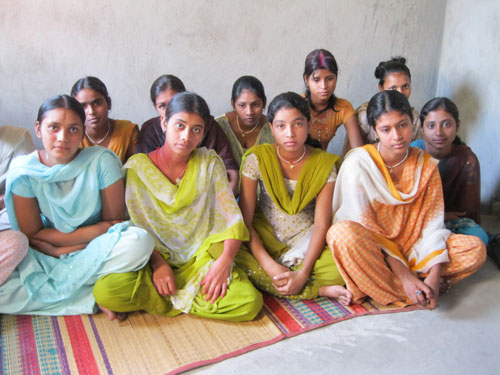Nitish has brought about almost a revolution in primary education. The pink buildings all around even in the remote villages are those new temples built or refurbished in last few years. However, 100% enrolment with no dropouts is still a distant dream. Another big drawback of the education sector is the lack of post-matric education facilities at least up to class XII in the rural Bihar.
This year’s number of those appeared and of the successful students in matric examination is huge. The more exciting is another news report. 80% of the passed out students are from rural regions. As reported, 9.31,993 students appeared for matric examination of 2011: 5, 32,523 were boys and 3, 99,470 were girls.
Interestingly, out of 41 students securing the top 15 positions, 13 are girls. During my last visit to my village I met a group of girls who according to the headmaster were hoping to obtain first division. But they were morose as they would not be able to pursue their higher education. There is no school nearby and moving to Sasaram the nearest town with the facilities will be almost impossible.

About 15.56 per cent (1, 43,864 students) have secured first class whereas 32.93 per cent (3, 04,385 students) have secured second-class marks.
About 18.71 per cent (1, 72,971 students) have secured third class.
The pass percentage is 67.21 (6, 21,220). Around 15.54 per cent boys (1, 43,700) and 16.88 girls (1, 56,016) have failed.
How many of the successful ones in matric will pursue further studies? We should assume that all the first and second divisioners, that comes to 4, 48,247 that should continue. But will they? It will be possible for the students in suburban areas to continue, as there is sufficient number of schools with facilities to teach up to class XII. But what percentage of rural students that are about 70% of the total successful ones can get accommodated in the very few rural schools that have facilities for class XII? Those who can’t be accommodated will have to move to suburban schools or will fail to pursue further education and drop. A large percentage of such students will be the girl students from rural areas who either can’t afford a suburban school or the parents will not like them to go to suburban schools to live out of family. What is needed?
1.The government and the private entrepreneurs in education must invest in creating education facilities up to class XII in at least one of the school in every panchayat on priority.
2.Another serious concern is about the failed students and particularly the girl students who are in lakhs. They are the suitable stuffs for trade education. Has the government plan for creating sufficient capacities for the failed and third divisioners to provide one or another skill-training?
3.Can the government with help of private artisans and experts run skill training centres in the local primary schools in second or evening shift?
4.Can the government encourage the engineering and other professional colleges such as medical to run diploma and skill building diploma course or if necessary make it mandatory? It will also lead to better utilization of the existing facilities.
5.The left-out children in rural India can have the education of class XI and XII through government and NGOs assisted distance learning facilities in each village and preparing a group of local franchises for the work. The educators or facilitators may be paid certain stipends or be allowed to charge some fees. Contents on cell phone, radio, TV channels and through computers at village centre pr postal services can be of help in distance learning.
As reported, Nitish offered radios for the people under BPL category, why can’t there be equally focused endeavour to educate and to skill each and every children of those who are being offered the radio? If Japanese could master lessons of quality management through radio, why can Bihar spread education and skill through radios and cell phones?
As Kapil Sibal keeps on saying only 12-14 of 100 students today get into higher education in India and he has set a target to pull up the figure to 30 or more. How can Bihar contribute to take the percentage of students moving to higher education to equal that of developed countries if 60% of rural population doesn’t contribute significantly in it?
